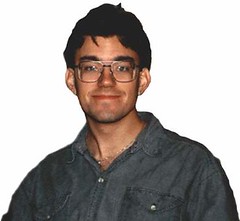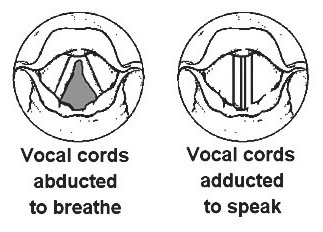 Last night, at bedtime, I put the new Adele album 21 in my headphones and settled down to sleep. Within three songs, I was crying hot tears, my face scrunched up so I couldn't see. I couldn't stop. I didn't want to. I sobbed silently through nine more tracks and 40 minutes in the dark (weeping with laryngitis is one more weird experience), enough that I was worried I'd short out one of the earbuds.
Last night, at bedtime, I put the new Adele album 21 in my headphones and settled down to sleep. Within three songs, I was crying hot tears, my face scrunched up so I couldn't see. I couldn't stop. I didn't want to. I sobbed silently through nine more tracks and 40 minutes in the dark (weeping with laryngitis is one more weird experience), enough that I was worried I'd short out one of the earbuds.
Music, that most human of instincts and inventions, can do that at its very best: reach past our rational minds, through any analysis or cynicism, beyond any physical pain or discomfort, directly to our emotions. Then it can draw those feelings out and tap them to the surface, even (especially?) when we didn't know just what was in there. I've had it happen: listening to the astounding student choir in the auditorium at the high school where my wife works, hearing Stevie Ray Vaughan play "Little Wing" by Jimi Hendrix, a few transcendent moments onstage with my own band in front of crowds big or small.
But Adele's "furious tornado of a voice" (as Pitchfork's Tom Breihan called it) pierces me. She's half my age, British, and likes to hit the pub with her friends, but that voice and the conviction behind it are why she's also a number-one selling artist in countries around the world right now. She's the queen of heartbreak. Every time she comes on with little but piano as backing, like on "Turning Tables" or "Someone Like You," and "Hometown Glory" or Bob Dylan's "Make You Feel My Love" from her previous collection, 19, I completely lose it...
Hang on. Have to take a break here for a second...
Heartbreak
Sheesh. It's like I'm a mopey '80s teen wallowing in my room to Robert Smith and Morrissey (and, back then, I wasn't). The funny thing is, Adele has a Cure cover on the album ("Lovesong"), and while it's very good indeed, it doesn't have the desperate edge of the original. I don't know whether it's the riff, or the way Smith sang "I will always love you" in 1989, but he made it clear that the love wasn't coming back, and maybe never got there to start with.
Adele's own songs often do accomplish that, in spades. Let's take one. At the end of her staggering BRIT Awards version of "Someone Like You" (the live recording went straight to #1 on the British charts), the announcer says something like, "You don't need dancers and pyro and lasers, do you?" Basically he's telling all the other acts at the awards, from Rihanna to Arcade Fire, "This girl can kick your ass any day of the week." And he's right. I'm sure she knows it, but whenever I've seen her end a song, she appears like she has to shake it off a bit, then she looks off to the side slightly, as if thinking, "Was that me?"
But there's a more subtle part of the performance that's worth examining. Here are the lyrics for the chorus:
Never mind, I'll find someone like you,
I wish nothing but the best for you, too,
Don't forget me, I beg,
I remember you said,
Sometimes it lasts in love,
But sometimes it hurts instead.
At the BRIT Awards and at every other live performance I've heard of that song, Adele sings the first four lines in the same, strong, high part of her vocal range, then pulls it down a little for the last two. It works great.
The moment
But listen to the version on the album. I think it's slightly too fast, but here's what I guess happened: producer Dan Wilson asked Adele to try something different in the chorus, to sing the third line ("Don't forget me, I beg...") higher than her normal range, where it almost cracks. It's not an unusual technique for even great singers to try straining on purpose, maybe creating some of the finest moments in popular music. (Think of John Lennon on the Beatles' "Twist and Shout," Roger Daltrey on the Who's "Won't Get Fooled Again," or the entire careers of James Brown, Janis Joplin, and AC/DC.)
For Adele, that moment, right there, the one line—"Don't forget me, I beg"—is the focus of the song, the crux of the album, the very keen point of the ice pick when it first hits the diamond and shatters it, the moment of heartbreak.
And here's why it, and the rest of Adele's songs, made me cry like that last night. There's the heartbreak of rejection, of unrequited love. There's the heartbreak of breaking up, of losing love. There's the heartbreak of getting dumped, of not being loved anymore. They ache, they seethe, they're horrible. That's what Adele makes her business singing about.
But worst of all is the heartbreak of having been in love, for years, and both of you still being in love. But one of you is going to die. And no one, neither of you, not anyone else, can do anything about it.
That's not what Adele is singing about, not directly. I hope she never knows how it feels, or if she does, that it's many, many years away. I didn't invite her voice there, but it seems to know, so when it breaks down my barriers and taps the depths, that's where it goes, and what comes out.









